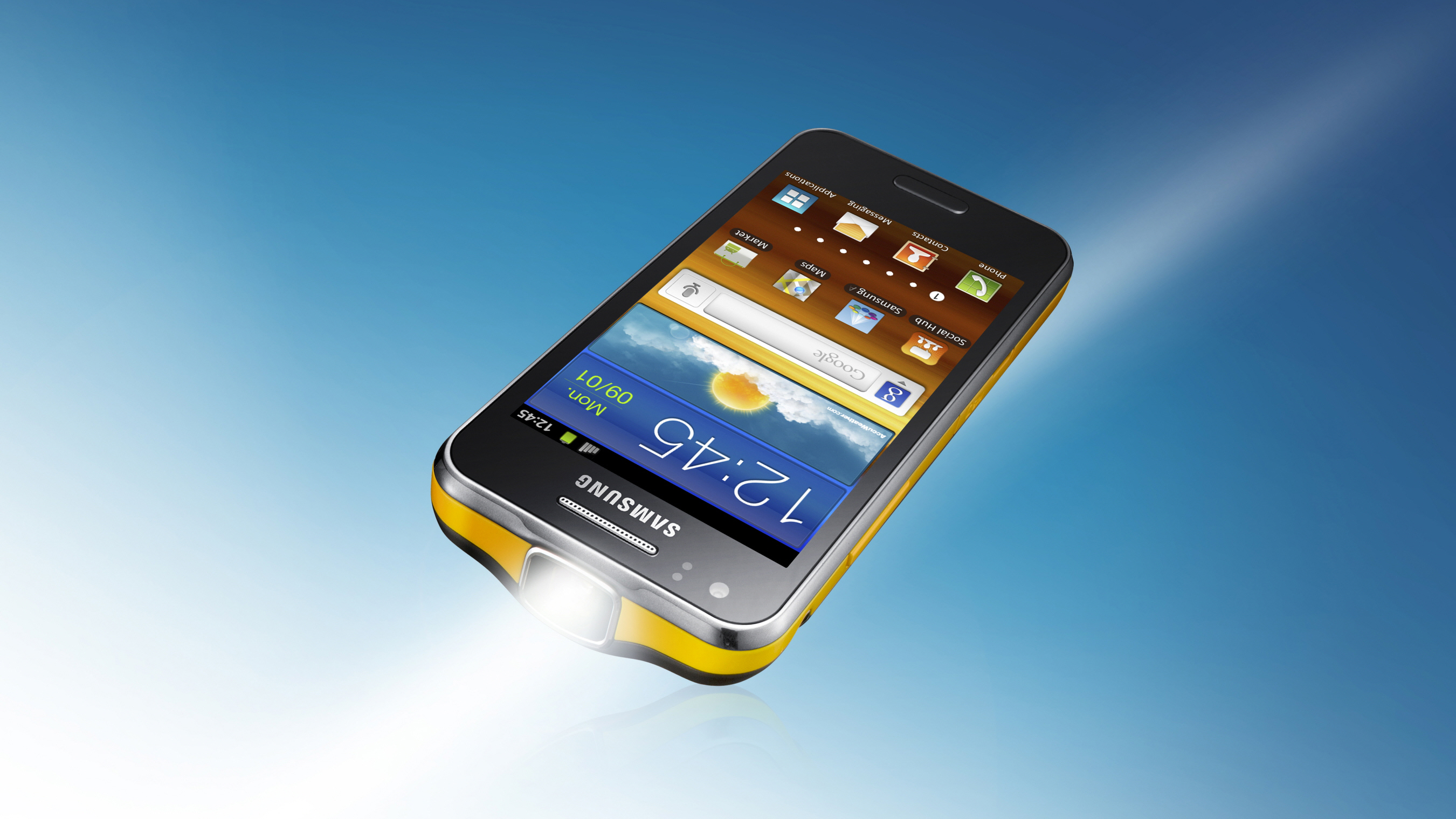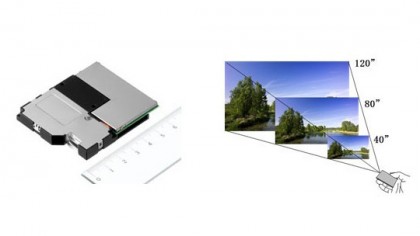A not-so-shining future: the sad demise of the projector phone
Big ideas aren't always so bright, y'know

Mobile World Congress, February 2012: a Samsung marketing executive hops on stage in front of a group of tired tech journalists, and delivers the Next Big Thing to come from the depths of Samsung's R&D caverns: a chunky, sluggish version of Samusng's hit Galaxy SII, with a tiny projector bolted on the front.
Although the Galaxy Beam made the inevitable page 17 of the broadsheets for a few days – Look! A phone that lets you have added PowerPoint! – the Beam rapidly became one of Samsung's curiously-expensive R&D projects that accidentally found its way to market (also see: Samsung Galaxy Zoom).
The tech world rapidly reviewed it, then proceeded to completely forget about projector phones, apart from those odd occasions when a small-name Asian firm knocked up a terrible-looking projector phone in a spare ten minutes.
Recently, though, there's been rumours of a Samsung Galaxy Beam 2 being launched in China, that's got us thinking: whatever happened to the dream of playing three-foot-high Angry Birds wherever you want?
Right, R&D team, what can we make today?
Projector phones happened as a result of two things: the advent of 'pico-projectors', which shrunk regular projector innards down to deck-of-cards size; and the growing samey-ness of all high-end smartphones on the market, and the subsequent trend for companies to do something different with the next handset they launched at the market.
It was an obvious move: take the optics of a pico-projector, shoehorn them into a phone, which already had all the necessary gubbins like a battery, control screen and processor to make it all work.
Then market it to road-warrior professionals and art students alike, as a way to showcase their PowerPoints and watercolour portfolios to unsuspecting passers-by, without the need to lug around a huge projector.
Sign up for breaking news, reviews, opinion, top tech deals, and more.
Sadly, while the concept sounds sort-of-OK on paper, the application was never very good. According to Ron Mertens, the editor of Pico Projector Info, phones like the Samsung Galaxy Beam fall foul of trying to solve too many problems, and end up being virtually unusable as either a phone or a projector.
He told TechRadar that "it's a bit of fun - when people first see pico projector phones, they say "Wow! That's really cool!". But the novelty wears off quickly – in fact, as soon as they see that they're not actually any good".
Mertens reckons that with projector-phones like the Galaxy Beam, you're getting the worst of both worlds – a terrible projector, married to a bulky, expensive, but sluggish phone with appalling battery life.
These comments are echoed in almost every review of the Galaxy Beam that spread across the internet after MWC: CNET summed it up well by saying "You're pocketing a middling Android experience while paying a premium for the pico projector stuck inside it"; our very own Laura Tosney's verdict was "props to Samsung for running with this, but we don't see the hordes needing a middling smartphone with projector addendum just yet."
It's the Cameraphone, round two
If you've been around cutting-edge phones for a while, though, you'll notice that most of these criticisms sound oddly familiar.
When cameraphones were first coming onto the market, the criticisms leveled were similar: devices were too expensive, and the cameras just weren't good enough to justify lugging around a heavier phone, since they couldn't come close to replacing the point-and-shoots of the day.
Fast forward a decade, of course, and you'll notice that even mid-range phones are sporting cameras oodles better than most 'Noughties point-and-shoots, and the concept of a smartphone having a decent camera (or two) is so well-ingrained that it's pretty much taken for granted.
Of course, this isn't suggesting that pico-projector phones are going to be de rigeur in 2020 – for one thing, the point-and-shoot market that cameraphones replaced is light years bigger than the decidedly niche market that pico projectors occupy today.
But rather, it's clear that pico-projector phones might just succeed – as soon as they can be fit inside phones without making them bigger, heavier, or more expensive.
Who Doesn't Like a Good Laser?
For that to happen, pico-projector technology is going to have to get better. As well as becoming smaller and lighter, they have to get better at, well, projecting.
The Galaxy Beam chucked out 15 lumens of light – enough, just, to make a usable image in a dark room. But more light makes the picture brighter, with better contrast and less need for black-out blinds.

One upgrade that promises to solve most, if not all, of these problems, is laser projection.
Rather than using a lamp as the light source, as in today's projectors, Laser Beam Scanning (LBS) systems use a semiconductor laser as the light source, and use mirrors to change the direction of the laser.
This allows it to project images without the need for focusing – and, in theory, high resolution and bright images should be easy.
At the moment, the tech's still firmly in the early-adopter phase. Although there are a few laser pico projectors on the market, none have made their way into phones as of yet – and even if they do, Mertens doesn't rate the current generation very highly, quoting problems with speckle (spatter in the light causing a slightly grainy image) as ruining most of the potential.
Mertens admits that in the long run (more than five years, in his opinion), however, pico-projector tech should get small, bright and crisp enough to usably fit inside a phone without too much hassle.
Whether or not you'll want to bother, though, is a different matter – he still reckons that pico-projector phones are doomed to be a gimmicky novelty.
Thanks to Samsung's (rumoured) launch of a Galaxy Beam 2, though, you'll soon have the freedom to decide for yourself.